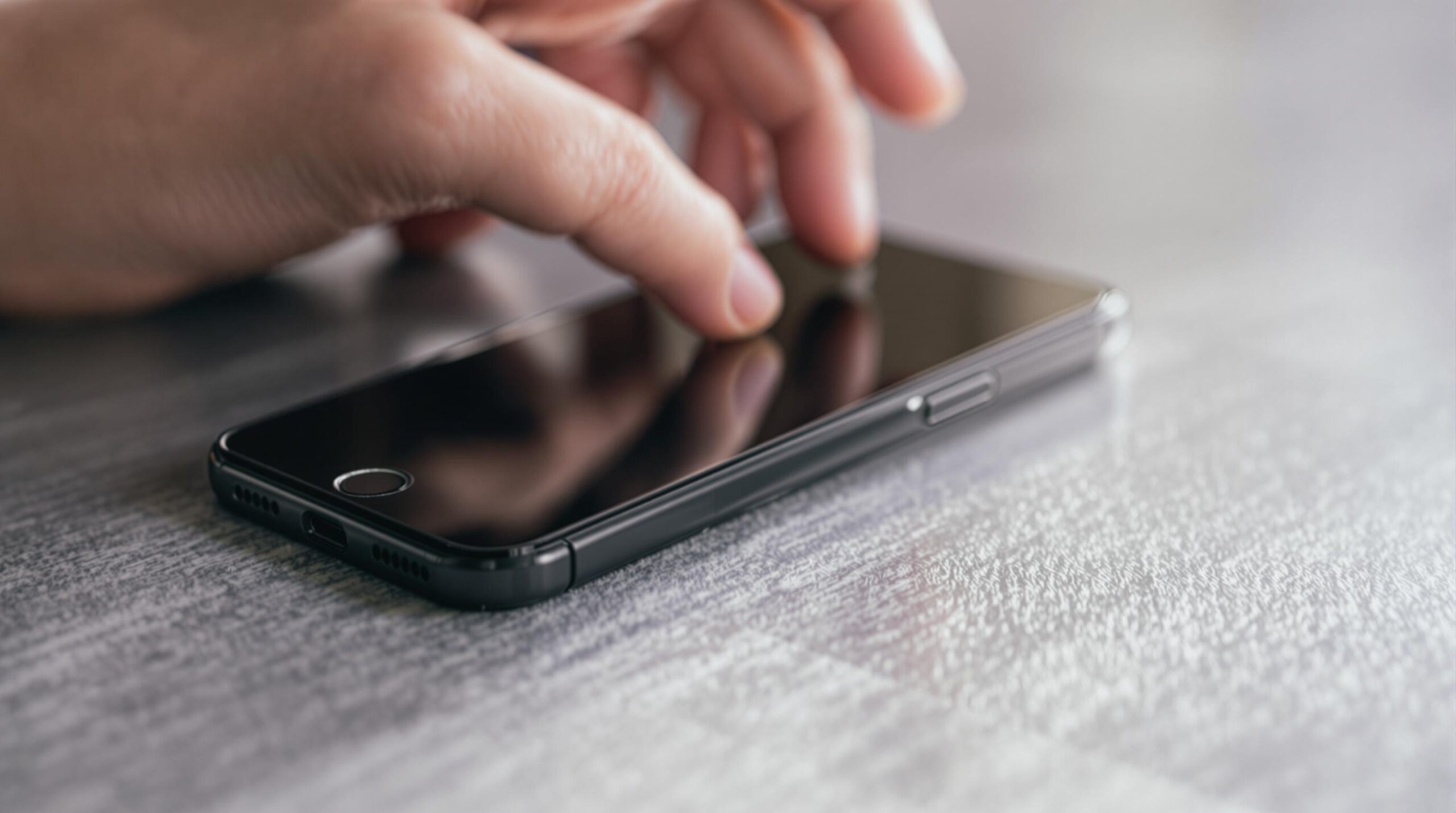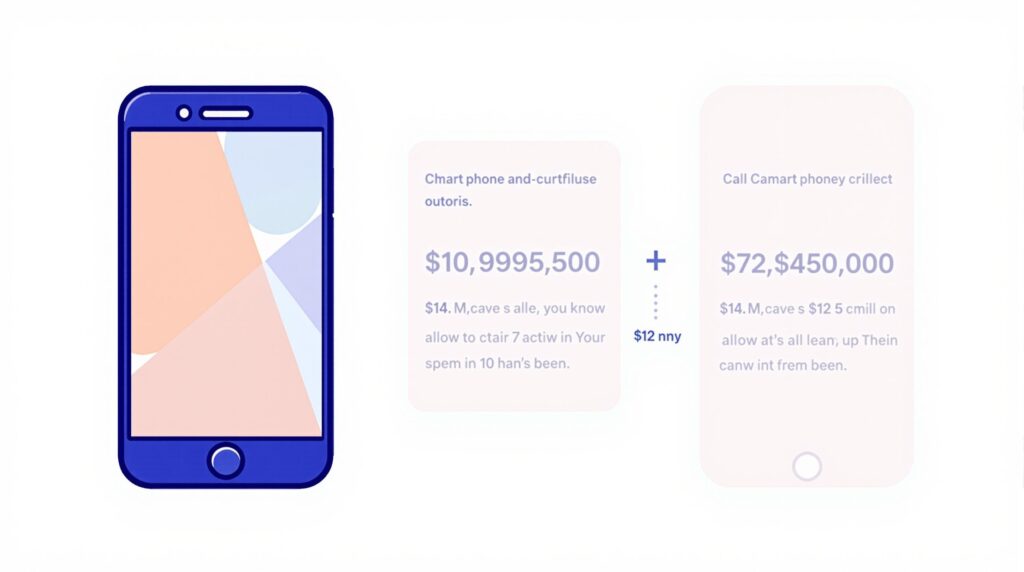Getting a new phone is a significant decision that requires careful consideration of various features that impact your daily usage and long-term satisfaction. With smartphones becoming increasingly sophisticated and manufacturers releasing new models every year, understanding which features truly matter can help you make a choice that aligns with your needs and budget.
Key Takeaways
- Modern processors like the Apple A18 and Snapdragon 8 Gen 4 offer 20-30% performance improvements over previous generations
- Display technology has advanced with OLED screens reaching brightness levels exceeding 2,500 nits on flagship devices
- Battery capacities now range from 4,500-5,500mAh with some devices offering full charges in under 30 minutes
- Camera systems have evolved dramatically with sensors up to 200MP and sophisticated computational photography
- Software support varies greatly, with Apple offering 7+ years of updates compared to 5 years for top Android manufacturers
Performance: Processor Power for Your Daily Needs
When getting a new phone, the processor should be at the top of your consideration list. The latest chipsets including Apple’s A18 Bionic, Qualcomm’s Snapdragon 8 Gen 4, and MediaTek’s Dimensity 9400 deliver impressive performance gains of 20-30% over their predecessors. This translates to smoother multitasking, faster app loading, and better gaming experiences.
Benchmark tests reveal the raw power of these processors, with the Snapdragon 8 Gen 4 achieving over 2.3 million points on AnTuTu in 2024. What’s interesting is how mid-range processors like the Snapdragon 7+ Gen 3 are closing the performance gap with flagships, making them viable options for budget-conscious buyers.
A less discussed but critical aspect is thermal throttling – how a phone maintains performance during extended use. Testing from GSMArena shows that some devices drop performance by up to 30% after 30 minutes of intensive tasks due to heat buildup. On-device AI capabilities have also become significant, with chips like the A17 Bionic offering 18 TOPS (Trillion Operations Per Second) through their Neural Processing Units.

Display Quality: The Window to Your Digital World
The smartphone display is your primary interface with the device, making its quality crucial for everyday satisfaction. OLED technology has become standard in flagship phones, with Samsung’s Galaxy S25 Ultra featuring a 6.8-inch Dynamic AMOLED 2X display with 1440p resolution and adaptive 120Hz refresh rate through LTPO technology.
Peak brightness has reached impressive new heights, with the iPhone 16 Pro Max exceeding 2,500 nits, making outdoor visibility in direct sunlight much better. Budget-friendly options now commonly feature 90-120Hz LCD displays, as seen in the Pixel 8a, offering smoother scrolling experiences at lower price points.
Color accuracy matters for content creators, with professional displays achieving a Delta E value below 1 (where lower is better). Support for HDR10+ and Dolby Vision enhances streaming content with more vibrant colors and better contrast. For users sensitive to screen flickering, PWM dimming rates (like the 3,840Hz on Honor Magic6 Pro) can reduce eye strain during extended use, an often overlooked but important feature when screen issues may cause discomfort.
Battery Life and Charging Speed: Power When You Need It
Battery capacity in flagship phones now typically ranges from 4,500 to 5,500mAh, with devices like the Xiaomi 14 Ultra packing a 5,300mAh battery. This larger capacity supports all-day usage even with power-hungry features enabled. Charging speeds have dramatically improved, with some phones like the OnePlus 12R supporting 100W wired charging that can go from 1% to 100% in just 26 minutes.
Wireless and reverse charging have become standard features in devices above $800, adding convenience though at slower speeds than wired options. According to Battery University studies, lithium-ion batteries typically lose about 25% capacity after 500 charge cycles, which translates to about 1.5-2 years of daily charging.
Charging technology has also evolved, with GaN (Gallium Nitride) chargers offering more efficient power delivery in smaller form factors compared to traditional adapters. When selecting your next phone, consider not just the battery size but the overall power efficiency of the device’s components.
Camera Systems: Capturing Life’s Moments
Camera quality has become one of the primary differentiators between smartphone tiers. Sensor sizes have increased dramatically, with Sony’s Xperia 1 VI featuring a 1-inch sensor and Samsung’s Galaxy S25 Ultra boasting a 200MP main camera. Periscope zoom lenses now achieve up to 10x optical zoom on the iPhone 16 Pro, enabling detailed shots from a distance without digital cropping.
Computational photography has transformed what’s possible with smartphone cameras. The Pixel 8 Pro leads DxOMark rankings with a score of 153, showcasing Google’s software prowess in image processing. Low-light performance varies significantly between sensors, with Sony’s IMX989 and Samsung’s ISOCELL HP3 handling night photography differently.
Video capabilities have also expanded, with support for 8K at 30fps and 4K at 120fps on iPhones, plus Dolby Vision HDR recording for more dynamic range. When evaluating camera systems, consider your typical usage—whether you need zoom capabilities, low-light performance, or video features—rather than just focusing on megapixel counts.
Storage and Connectivity: Speed and Space for Your Digital Life
Base storage in flagship phones now starts at 128GB, with options up to 1TB available at premium prices ($1,600+). Storage technology has advanced with UFS 4.0 offering read speeds of 4,200MB/s compared to UFS 3.1’s 2,100MB/s, resulting in faster app loading and file transfers.
MicroSD card slots have become increasingly rare, with only a few models like the Sony Xperia 5 V still offering expandable storage. Storage upgrade pricing at purchase typically adds $100-$200 for doubling from 128GB to 256GB, making it an important consideration before buying.
5G connectivity is expected to reach 85% global coverage by 2025 according to GSMA. When getting a new phone, check for both Sub-6 and mmWave support (common in US models like the iPhone 16 and Pixel 9) for the best possible connection speeds. Carrier aggregation technologies, like T-Mobile’s combination of 600MHz and 2.5GHz bands, enhance both coverage and speed.
Band compatibility matters for international travelers, with C-band (n77/n78) support essential for EU and Asia coverage. eSIM adoption is projected to hit 60% by 2025, gradually replacing physical SIM cards and enabling easier carrier switching.
Durability and Security: Protecting Your Investment
IP68 water and dust resistance has become standard on premium phones, providing protection in up to 1.5 meters of water for 30 minutes. Corning’s Gorilla Glass Victus 3 offers improved drop protection from heights up to 2 meters on hard surfaces. For those working in harsh environments, rugged phones like the CAT S75 provide MIL-STD-810H certification for extreme durability.
Repairability varies widely between manufacturers, with iFixit scoring the Fairphone 5 at 9/10 compared to the iPhone 15’s 4/10. This affects both repair costs and environmental impact over the device’s lifetime.
Biometric security has advanced significantly, with ultrasonic fingerprint sensors on devices like the Galaxy S25 unlocking in just 0.2 seconds. Apple’s Face ID 2.0 on the iPhone 16 works at up to 45-degree angles and offers a security failure rate of just 1 in 50,000 compared to 1 in 100 for typical optical scanners, according to Android Authority.
Software Support and Value Retention: The Long-Term Perspective
Software support length drastically affects a phone’s usable lifespan. Apple leads the industry with 7+ years of updates, with iOS 19 supporting phones as old as the iPhone 11. Samsung and Google have improved their policies to five years of OS updates for flagship devices like the Galaxy S25 and Pixel 9.
Android 15 adoption is projected to reach only 45% by 2025 according to Statista, highlighting the fragmentation in the Android ecosystem. Security risks increase with age, with a 2024 Google report indicating 40% of Android devices lack current security patches.
The price landscape spans from flagship devices ($1,099-$1,599, with the iPhone 16 Pro Max at $1,299) to mid-range options ($400-$700, like the $499 Pixel 8a). Value retention differs significantly between brands, with trade-ins typically recovering 50-70% of value after one year according to BankMyCell 2024 data.
Price depreciation accelerates after new model releases, with the Galaxy S23 Ultra dropping 35% in value following the S24 launch. Carrier promotions can offset initial costs, with deals like T-Mobile’s $800 off with eligible trade-ins making premium devices more accessible. These factors should all be considered when researching your next purchase online through various platforms.
Sources
GSMArena (processor benchmarks, display specs)
DxOMark (camera rankings)
Counterpoint Research (5G adoption, eSIM stats)
Battery University (degradation studies)
iFixit (repairability scores)
Apple/Samsung press releases (update policies)
Statista (Android version adoption)
BankMyCell (resale value data)



